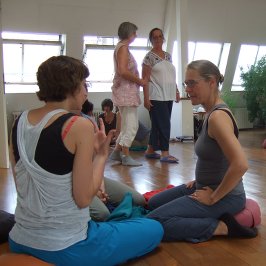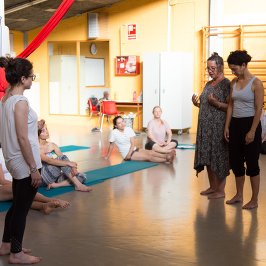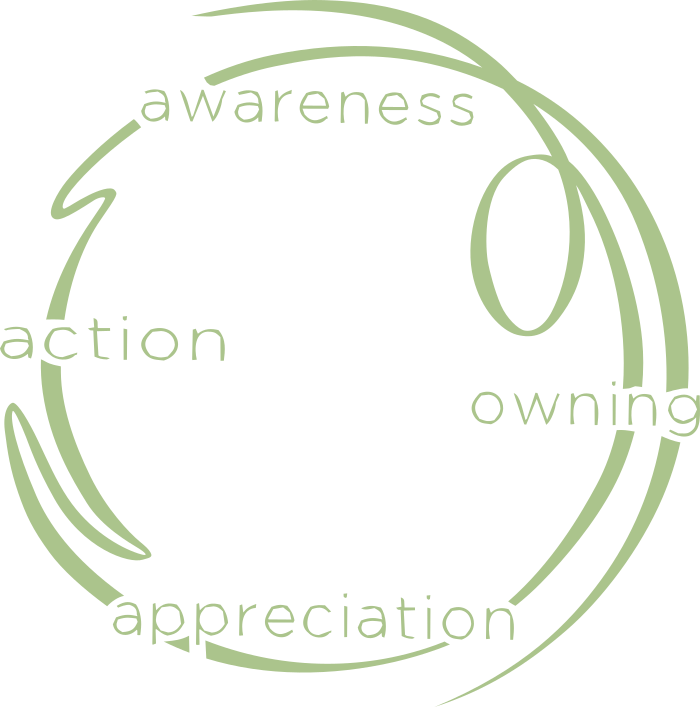Training Description

Get A Taste
When you would like to get a taste of the moving cycle method.

Moving Cycle Practitioner
When you would like to become a moving cycle practitioner.

Advanced moving cycle practitioner
When you would like to become an advanced moving cycle practitioner.

Moving Cycle Teacher
When you would like to become an advanced moving cycle teacher.
Get a taste
Introduction - 15 hours
The Moving Cycle stresses the importance of trusting and awakening the body’s innate resources for healing and growth. These resources include high quality attention to and support of movement process that emerge when we focus on our bodies in a non-judgmental and largely non-verbal manner.
The Moving Cycle method involves a shared authority and inter-subjectivity between a facilitator and a mover, and a trusting of the body’s ability to access implicit memories, engage in creative experimentation, and unravel the physical, emotional, and cognitive barriers to wellbeing.
Sessions unfold in four phases, beginning with awareness and ending with action, and focus on developing conscious body motions that arise from within and tell a story that informs and transforms the client.
This seminar will experientially introduce the participant to the Moving Cycle, so that the work can be experienced as well as understood. Activities will include guided experiments in developing high quality attention to ones current experience, finding the body’s impulses to act in precise ways, and supporting these movement sequences to literally ‘move’ us towards greater wellbeing.
Who might be interested
Accordingly, the trainings now include psychologists, psychotherapists, dance therapists, educators, minis
Training methods an prerequisites
Small group and whole group discussion integrates personal experience with theories and practices from multiple disciplines. Because of this highly immersed method of learning, participants need to be emotionally mature and socially adept.
While the training can be and usually is personally transformative, its intent is to assist people in working professionally with the moving body. For this reason, it is also important that trainees have a working knowledge of their own professional discipline, and an intention to apply the Moving Cycle to their profession. It is also strongly recommended that trainees have a good grasp of basic psychological concepts, as well as a working knowledge of human anatomy and physiology.
While very rare, it can happen that trainees experience persistent difficulties in managing their own experiences in the training group, managing their relationships with others in the group, or learning the basics of the method. Because of this unlikely possibility, the Moving Cycle Institute cannot guarantee that a participant will be allowed to complete the training sequence.
Moving Cycle Practitioner
Phase One – Core Principles and Practices – 25 hours
Participants learn the theory and practice of the Moving Cycle, as it has developed from its roots in dance therapy, body psychotherapy, neuroscience, attachment theory, phenomenology, and contemplative disciplines. Learning takes place largely through physical experimentation, followed by discussion.
Core skills will be taught: the oscillation of attention, postponing meaning-making, physical free association, shared authority between the facilitator and the mover, and supporting emerging movement sequences to become body narratives.
Phase Two – The Rhythm of Self and Other – 25 hours
Basic skills will be refined and extended by focusing on how the self develops in relationship, and how non-verbal interaction deeply influences our energy, our character, and our bodies.
By experimentally studying the body-to-body relationship between the facilitator and the mover, the facilitator can internalize skills that support the mover to feel more secure in touching into body memories and action tendencies from the past that can now be sensitively worked with within the attuned relationship.
Phase Three – Working with Movement Continuums – 25 hours
This course delves deeply into the connection between physical movements (from inner micro-movements to large, expressive motions) and psychological, emotional, and relational states.
By seeing movement as occurring along a functional continuum, participants will learn how to identify movement impulses that have been blocked, resulting in physical and relational holding patterns that cause us to suffer.
By learning how to support these impulses to develop into detailed body narratives, conditions such as dissociation and addiction can be addressed.
Phase Four – Touch, Attachment, and Movement Patterns – 25 hours
In this phase the participants work with the details of developmental movements, and how learned interruptions of these movements can harm adult functioning.
By committing to an accurate, detailed and creative recovery of these early movements, we can set the stage for healthy adult behavior. Because these movements are often ‘remembering’ pre-verbal or non-verbal experiences, touch more than words often becomes the treatment of choice.
Participants will learn the basic principles and practices of the use of touch – types of touch, when, where and how to touch, how long to touch, and when not to touch.
Special attention will be placed on ethics, and how touch interventions can support movement sequencing. As well, we will relate movement tendencies to attachment tendencies – to the patterns of how we learned to navigate close relationships.
We will look into attachment theory, and keep drawing a through-line from attachment tendencies to movement patterns and to the power of touch to help relationships feel secure and nourishing.
Advanced Moving Cycle Practitioner
Four Advanced Topics Courses - 25 hours each
Supervision
Moving Cycle Teacher
Two Advanced Topic Courses – 25 hours each, 50 total hours
At least one course should be a Research & Supervision course
Teaching & Learning Course – 25 hours
In many ways, wellbeing can be seen as related to our ability to learn. Whether it is in therapeutic, educational, or personal contexts, learning ensures our adaptability, our openness to new experiences, and our problem-solving skills. We typically think of learning as a largely cognitive phenomenon, but our bodies constantly need to learn as well. This course will explore, in a cross-disciplinary way, how we can use body-based learning as a means of expanding our ability to take in, digest, and make use of new experiences, and apply this to our healing, our education, our relationships, and our ability to self-reflect. In addition, we will practice both formal and informal teaching techniques within the framework of the Moving Cycle.
Assisting in Practitioner Trainings – Between 25 and 100 hours
Trainees will first assist in any course they might want to subsequently teach.
Supervision
Ten hours of supervision of your teaching, done with a Moving Cycle Teacher
